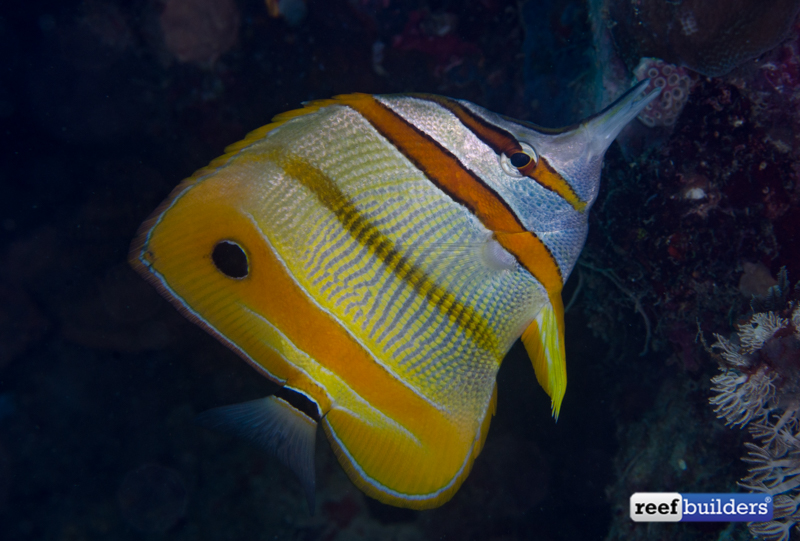Chelmon rostratus, aka the Copperband Butterflyfish is an extremely beautiful fish, and by far one of the most common and popular species of butterflyfish in home aquariums, and on the reef. Earlier this year we told you about our travels and diving in Raja Ampat, Indonesia, where among many other things, we encountered a very unusual color form of the ubiquitous copperband butterflyfish.
Our talented diving companion Vincent Chalias succeeded in documenting this exciting and little known color form of Copperband in pictures, but we managed to sneak in a few video recordings of these fish. We’ve taken some time to get around to editing our original video footage but we managed to record this very rare and localized form of the ‘endemic’ copperband butterflyfish.

Unlike the newly minted Cenderawasih butterflyfish which is found there among its closely related longnose butterflyfish, this uniquely patterned copperband is the only form of the species to be found on the reefs around Waigeo Island. Having seen thousands of cookie-cutter looking normal copperband butterflyfish in our lifetime, we come to expect a particular look from the ‘original’ Chelmon rostratus.
By comparison the Raja Ampat copperband butterflyfish is suffused with much more yellow, particularly behind the second orange body stripe. But the most striking feature of the copperbands butterflyfish from this part of the world is the slightly indistinct mid-body stripe; instead of being a perfectly developed orange bar bordered in dark brown, the Raja Copperband’s mid-body stripe is just a shadow of light brown with no edging to make it pop.

With no other normal specimens of copperband butterflyfish around, we believe that the Raja Copperband is an isolated population and has a shot at developing into its own species, if it hasn’t already done so. The taxonomy of this peculiar fish is for ichthyologists to figure out but in the meantime, we’re just excited to see genetic richness in a species that is normally so uniform.



